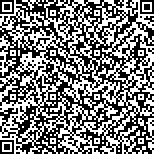张颖,苏严慧,金书晓,陈金,王静,杜金刚.穴位刺激联合膀胱功能训练对脊髓损伤患者尿流动力学的影响[J].中华物理医学与康复杂志,2015,37(11):842-845
扫码阅读全文

|
| 穴位刺激联合膀胱功能训练对脊髓损伤患者尿流动力学的影响 |
|
| |
| DOI: |
| 中文关键词: 穴位刺激 尿流动力学 膀胱功能 脊髓损伤 |
| 英文关键词: Acupuncture Urodynamics Bladder function Spinal cord injury |
| 基金项目:天津市中西医结合科研课题(13218) |
|
| 摘要点击次数: 3376 |
| 全文下载次数: 5008 |
| 中文摘要: |
| 目的观察穴位刺激联合膀胱功能训练对脊髓损伤(SCI)患者尿流动力学的影响。 方法选取外伤后SCI患者60例,按照随机数字表法将其分为研究组和对照组,每组30例。2组患者均采用单纯膀胱功能训练,研究组在此基础上辅以穴位刺激治疗,具体包括针刺治疗、艾灸治疗及电针治疗。分别于治疗前、治疗3个月后及治疗6个月后进行尿动力学检查、肾功能评定、尿路感染和日常生活能力评定。 结果治疗前,2组患者膀胱容量、最大逼尿肌压力、残余尿量、尿素氮水平、血肌酐水平、肾功能受损情况、尿路感染情况、BI评分之间比较,差异无统计学意义(P>0.05)。2组患者治疗3个月后及6个月后膀胱容量、最大逼尿肌压力、残余尿量、BI评分均较组内治疗前有不同程度改善(P<0.05)。研究组治疗6个月后最大逼尿肌压力[(42±17)cmH2O]、残余尿量[(63±27)ml]、BI评分[(74±22)分]较组内治疗3个月后最大逼尿肌压力[(65±19)cmH2O]、残余尿量[(81±26)ml]、BI评分[(65±20)分]改善(P<0.05)。对照组治疗6个月后BI评分[(71±25)分]高于组内治疗3个月后BI评分[(62±24)分](P<0.05)。与对照组治疗后同时间点比较,研究组治疗3个月后除BI评分外,剩余指标均优于对照组治疗3个月后(P<0.05)。治疗6个月后,研究组除膀胱容量、BI评分外,剩余指标均较对照组治疗6个月后优异(P<0.05)。治疗前,患者均采用尿管导尿。治疗后,研究组反射性排尿、叩击排尿、腹压排尿人数与对照组比较,差异有统计学意义(P<0.05)。 结论穴位刺激联合膀胱功能训练能够显著改善外伤后SCI患者的尿流动力学,减少患者肾功能损伤及泌尿系感染的发生率。 |
| 英文摘要: |
| Objective To evaluate the effect of acupuncture point stimulation on the urodynamics of spinal cord injury patients. MethodsSixty spinal cord injury cases were divided into a research group and a comparison group. Both groups were given bladder training, but the research group also received acupuncture point stimulation. The subjects′ maximum cystometric capacity, maximum detrusor pressure and residual urine were measured, along with renal function and any urinary tract infections. The scale of activity of their daily lives was compared before and 3 months and 6 months after the treatment. Results There were no statistically significant differences between the groups before the treatment. There were statistically significant differences in maximum cystometric capacity, maximum detrusor pressure, residual urine and Barthel index (BI) after 3 and 6 months of treatment. In the research group, maximum detrusor pressure, residual urine and BI scores had all improved after 6 months compared with the 3 month values. In the comparison group only the BI score had improved significantly between 3 and 6 months, and this was not reflected in a significant change in the scale of activity in daily life. After 3 months, only the average BI differed significantly between the two groups. After 6 months all indexes except the BI and maximum cystometric capacity differed significantly. There were also significant differences between the groups in reflex voiding, percussion voiding, and abdominal pressure voiding. ConclusionsAcupuncture point stimulation can improve the bladder function of spinal cord injury patients. It can also decrease the incidence of urinary tract infection and the possibility of renal dysfunction. |
|
查看全文
查看/发表评论 下载PDF阅读器 |
| 关闭 |
|
|
|